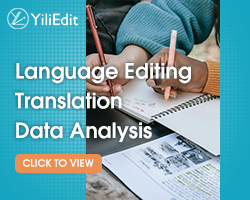Effects of Motion-Guided Imagination Training Combined with Eszopiclone on Sleep Disorders after Stroke
DOI:
https://doi.org/10.62767/dbm501.5528Keywords:
motion-guided imagination training, Eszopiclone, stroke, sleep disordersAbstract
Objective: To explore the effects of motion-guided imagination training combined with eszopiclone therapy on sleep status, neurological function, negative emotion and quality of life in patients with post-stroke sleep disorders. Methods: A total of 90 patients with post-stroke sleep disorders treated from March 2021 to December 2023 were collected and divided into two groups: study group (n = 45; motion-guided imagination training combined with eszopiclone treatment for 2 weeks) and control group (n = 45; eszopiclone treatment for 2 weeks). The sleep conditions of the two groups were compared at different time points, and the differences of neurological function scores, serum indexes, negative emotions and quality of life indexes before and after treatment were recorded. Results: After 1 and 2 weeks of treatment, the Pittsburgh Sleep Quality Index (PSQI) score, awakening frequency and awakening time of both groups were decreased, and the sleeping time was increased. The changes were more apparent in the study group than the control group (p < 0.05). After treatment, the scores of National Institutes of Health Stroke Scale (NIHSS), Self Rating Anxiety Scale (SAS) and Self Rating Depression Scale (SDS) were lowered, and the scores of Quality of Life (QOL) scale, 5-hydroxytryptamine (5-HT) and brain-derived neurotrophic factor (BDNF) were elevated in both groups. The changes were more evident in the study group than the control group (p < 0.05). Conclusion: Motion-guided imagination training combined with eszopiclone may have a good effect in the treatment of sleep disorders after stroke, which can enhance sleep quality, promote neurological function recovery and improve negative emotions and quality of life, with clinical application value.
References
Katzan IL, Thompson NR, Walia HK, et al. Sleep-related symptoms in patients with mild stroke. Journal of Clinical Sleep Medicine 2020; 16(1): 55-64.
Pan Y, Xu Y. Clinical Study on Five-Phase Music Therapy Combined with Intervention of Individualized Traditional Chinese Medicine Constitution for Sleep Disorder Caused by Ischemic Stroke. Journal of New Chinese Medicine 2023; 55(11): 206-211.
Luo Y, Yu G, Liu Y, et al. Sleep quality after stroke: A systematic review and meta-analysis. Medicine 2023; 102(20): e33777.
Hale E, Gottlieb E, Usseglio J, et al. Post-stroke sleep disturbance and recurrent cardiovascular and cerebrovascular events: A systematic review and meta-analysis. Sleep Medicine 2023; 104: 29-41.
Cai H, Wang XP, Yang GY. Sleep Disorders in Stroke: An Update on Management. Aging and Disease 2021; 12(2): 570-585.
Su Q, Zou D, Gai N, et al. Traditional Chinese Medicine for Post-stroke Sleep Disorders: The Evidence Mapping of Clinical Studies. Frontiers in Psychiatry 2022; 13: 865630.
Gottesman RF, Lutsey PL, Benveniste H, et al. Impact of Sleep Disorders and Disturbed Sleep on Brain Health: A Scientific Statement From the American Heart Association. Stroke 2024; 55(3): e61-e76.
Song Z, Chen Y, Li J, et al. Comparative effectiveness of different treatments for post-stroke insomnia: A network meta-analysis. Heliyon 2023; 9(11): e21801.
Walsh JK, Krystal AD, Amato DA, et al. Nightly treatment of primary insomnia with eszopiclone for six months: effect on sleep, quality of life, and work limitations. Sleep 2007; 30(8): 959-968.
Wu T, Yu G, Li ZX, et al. Case report of acute liver injury caused by the eszopiclone in a patient with chronic liver disease. Medicine 2021; 100(25): e26243.
Wu R, Liu LL, Zhu H, et al. Brief Mindfulness Meditation Improves Emotion Processing. Frontiers in Neuroscience 2019; 13: 1074.
Barrett B, Harden CM, Brown RL, et al. Mindfulness meditation and exercise both improve sleep quality: Secondary analysis of a randomized controlled trial of community dwelling adults. Sleep Health 2020; 6(6): 804-813.
Zhang W, Zhang K, Ma W. Effects of narrative nursing combined with exercise guided imagination training on anxiety, depression and stigma in patients with depression after cerebral infarction. Psychological Monthly 2025; 20(3): 194-196.
Zhu Y. Effect of motor guided imagination training on sleep quality and quality of life in stroke patients. World Journal of Sleep Medicine 2024; 11(4): 725-728, 731.
Wan L, Huang Q, Zhu H. The Application Research of Visual-Guided Motor Imagery Training in Patients with Parkinson's Disease and Swallowing Dysfunction. Modern Nurse 2025; 32(11): 44-48.
Zhang N, Cai HM, Han XS, et al. Effects of exercise guided imagination training combined with duloxetine on neurocognitive function, serum NGF and BDNF levels in patients with depression after cerebral infarction. Journal of International Psychiatry 2022; 49(4): 672-674, 681.
Neurology Branch of Chinese Medical Association, Cerebrovascular Disease Group in Neurology Branch of Chinese Medical Association. Chinese guidelines for diagnosis and treatment of acute ischemic stroke 2018. Chinese Journal of Neurology 2018; 51(9): 666-682.
Wang Y, Xu B, Zhou J, et al. Clinical Effect of Yangxue Qingnao Granules Combined with Dexzopiclone on Post-stroke Sleep Disorder and its Effects on Serotonin and Brain-derived Neurotrophic Factor Levels. China Journal of Pharmaceutical Economics 2019; 14(10): 101-103, 107.
Lou Z, Li Y, Yang Y, et al. Affects of Anxiety and Depression on Health-Related Quality of Life among Patients with Benign Breast Lumps Diagnosed via Ultrasonography in China. International Journal of Environmental Research and Public Health 2015; 12(9): 10587-10601.
Samakouri M, Bouhos G, Kadoglou M, et al. Standardization of the Greek version of Zung's Self-rating Anxiety Scale (SAS). Psychiatriki 2012; 23(3): 212-220.
Burckhardt CS, Anderson KL. The Quality of Life Scale (QOLS): reliability, validity, and utilization. Health and Quality of Life Outcomes 2003; 1: 60.
Rajashekar D, Wilms M, MacDonald ME, et al. Lesion-symptom mapping with NIHSS sub-scores in ischemic stroke patients. Stroke and Vascular Neurology 2022; 7(2): 124-131.
Li F. The effect of Dexzopiclone in the treatment of Parkinson's disease patients with sleep disorders. Journal of International Psychiatry 2024; 51(6): 1843-1845.
Hu SJ, Chen CC, Ye XW, et al. Effects of escitalopram combined with EEG biofeedback in the treatment of depression patients and its impact on serum cytokine levels. Chinese Remedies & Clinics 2024; 24(7): 432-436.
Peng X, Feng S, Zhang P, et al. Analysis of influencing factors of anxiety and depression in maintenance hemodialysis patients and its correlation with BDNF, NT-3 and 5-HT levels. PeerJ 2023; 11: e16068.
Hu L, Zhang Y. Application in Patients with Post-stroke Sleep Disorders and Its Effects on Serum Neurotransmitter and BDNF Levels. Chinese Journal of Convalescent Medicine 2021; 30(1): 35-37.
Song Z, Chen Y, Li J, et al. Comparative effectiveness of different treatments for post-stroke insomnia: A network meta-analysis. Heliyon 2023; 9(11): e21801.
Louzada LL, Machado FV, Nóbrega OT, et al. Zopiclone to treat insomnia in older adults: A systematic review. European Neuropsychopharmacology 2021; 50: 75-92.
Zhang HY, Liu RY, Li YH. Effect of motion-guided imagination training combined with Roy adaptation mode on mood, cognitive function and self-care ability of elderly patients with post-ischemic stroke depression. Journal of Clinical Psychosomatic Diseases 2022; 28(1): 99-103.
Zhou L. The Effects of Motor Imagery Training on Pain and Sleep Quality in Stroke Patients. Chronic Pathematology Journal 2022; 23(10): 1587-1592.
Chen C, Jiang H, Liang Y. Effects of guided imagery relaxation therapy in stroke patients. Chinese Journal of Nursing 2019; 54(7): 985-988.
Published
Data Availability Statement
The analyzed data sets generated during the study are available from the corresponding author on reasonable request.
Issue
Section
License
Copyright (c) 2025 Qingchuan Gu, Yang Chen (Author)

This work is licensed under a Creative Commons Attribution 4.0 International License.




